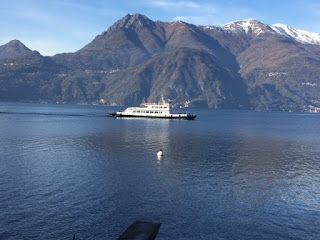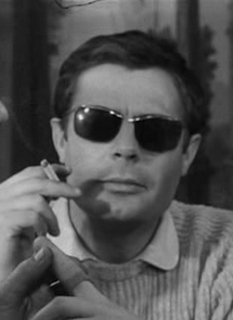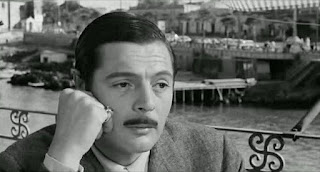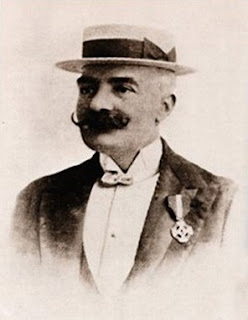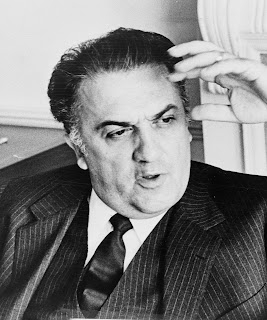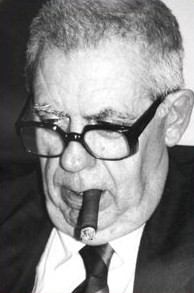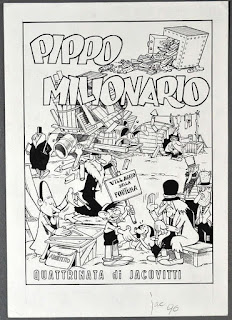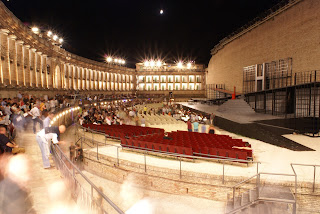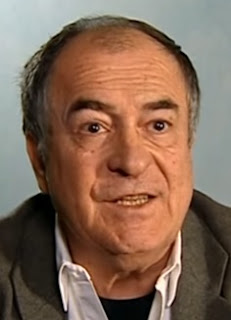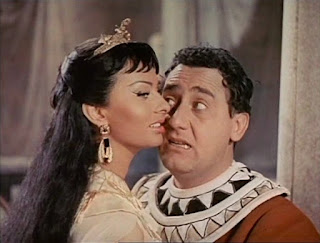Glamorous star one of just three Italian Oscar winners
 |
Sophia Loren, aged 19 in this picture, captivated
audiences from the start of her career |
The actress Sophia Loren, who came to be regarded as one of the
world’s most beautiful women and is the most famous name in Italian cinema
history, was born on this day in 1934 in Rome.
In a career spanning more than 60 years, Loren appeared in
almost 90 films made for the big screen and several others for television. Although she was often picked for her looks
and box-office appeal, she proved her acting talent by winning an Oscar for her
role in Vittorio De Sica’s gritty 1960 drama Two Women, released in Italy as La
Ciociara.
In doing so she became one of only three Italians to win the
Academy Award for Best Actor or Actress and the first of either sex to win the
award for an Italian-language film. She followed Anna Magnani, who had won in
1955 for The Rose Tattoo, as the second Italian Oscar winner.
Loren stayed away from the awards ceremony in 1961 on the
grounds that the suspense of waiting to learn whether she had won was something
she would rather suffer in private but she was there in person to accept an
honorary Oscar in 1991, recognising her career achievements.
She also attended the 1993 Oscars to present an honorary
award to the director Federico Fellini, and the 1999 ceremony to present the
Academy Award for Best Actor to her compatriot Roberto Benigni, the first
Italian male to win the award, for Life is Beautiful.
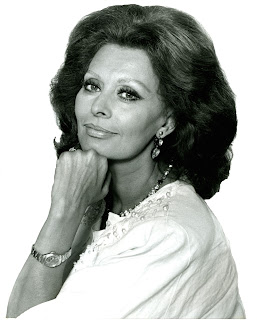 |
Loren, aged 52, photographed by the English
photographer Allan Warren in Los Angeles |
Loren was born Sofia Costanza Brigida Villani Scicolone at
the Clinica Regina Margherita in Rome. Her father, Riccardo Scicolone, was a
construction engineer of distant noble descent and her mother, Romilda Villani,
a piano teacher.
Scicolone was already married, however, and ultimately abandoned
Villani, who left Rome with Sofia and her younger sister, Maria, to live with
their grandmother in Pozzuoli, a port town just outside Naples, which is why
Loren came to think of herself as Neapolitan rather than Roman.
Growing up in Pozzuoli in wartime was dangerous, the port
coming under frequent attack from Allied bombers. After Sofia was wounded by shrapnel while
running to a shelter, the family moved to a safer location with relatives in
Naples.
After the war, they returned to Pozzuoli, where Villani’s
mother opened a bar, in which Romilda played the piano and her daughters waited
on tables. The bar became popular with
America servicemen in particular.
It was after reaching the final of the Miss Italia beauty pageant
in 1950 that Loren was encouraged to take acting lessons by Carlo Ponti, a film
producer who was one of the judges.
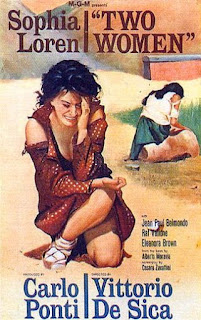 |
Loren won an Oscar for her role in the
1960 film Two Women |
She and Ponti would later marry, despite there being 22
years between them, remaining together from 1957 until his death in 2007 at the
age of 94.
Although Ponti obtained a divorce from his wife, Giuliana, in
Mexico so that he could marry Loren, the divorce was not recognised in Italy
and the marriage had to be annulled so Ponti would not face arrest for bigamy.
They married again in 1966, but only after Giuliana had
agreed that all three should become citizens of France so that she and Ponti
could be divorced in the French courts, allowing Loren to marry her ex-husband
in a civil ceremony.
Loren began her acting career as Sofia Lazzaro, changing her screen
name to Sophia Loren in 1952. Her breakthrough role came in De Sica’s 1954
anthology The Gold of Naples, filmed as a series of episodes from Neapolitan
life.
In the same year she filmed the first of 11 movies in which
she starred with Marcello Mastroianni, the best known of which were the
romantic comedy-dramas Yesterday, Today and Tomorrow (1963) and Marriage,
Italian Style (1964), both directed by De Sica, and Robert Altman’s Prêt-à-Porter
(1994).
Loren enjoyed a successful career in the United States, too,
signing a contract with Paramount Studios and appearing in a series of Hollywood
films opposite such major stars as Cary Grant (Houseboat, 1968), Clark Gable
(It Started in Naples, 1960), Frank Sinatra (The Pride and the Passion, 1957,
also with Grant), Alan Ladd (Boy on a Dolphin, 1957), William Holden (The Key,
1958), and Paul Newman (Lady L, 1965).
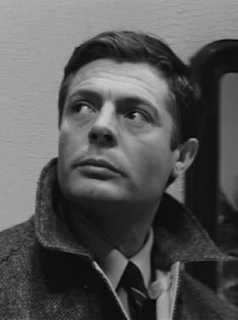 |
Loren and Marcello Mastroianni starred
together in 11 films |
Because she was 1.75m (5ft 9ins) tall – even taller with
heels and her hair stacked up – some actors were reluctant to star opposite
her. In fact, so that she did not appear to tower over the notably small Alan
Ladd in Boy on a Dolphin she filmed some scenes standing in a trench.
Loren had a brief affair with Cary Grant while filming The
Pride and the Passion but ultimately rejected him in favour of Ponti. Later she
resisted the advances of Peter Sellars, who starred with her in The Millionairess
(1960) and recorded a single, Goodness Gracious Me, with her that reached number four in
the UK charts.
Among her numerous awards were five Golden Globes, eight
Bambi Awards and 10 David di Donatellos – Italy’s own ‘Oscars’ – six as best
actress.
Her success with Two Women, which won her eight awards,
including a BAFTA, a David di Donatello, a Nastro d’Argento and a Cannes Film
Festival award, came after she rejected her original casting and insisted on
playing the older of the two women of the title – the mother – after it was
assumed she would take the role of the more glamorous daughter.
She and Ponti had two children – Carlo Jr, now an orchestra
conductor, and Eduardo, a film director – after Loren suffered two
miscarriages, which prompted doctors to order her to spend almost her entire
subsequent pregnancies resting in bed.
They have four grandchildren.
Chosen by Empire magazine at number 25 in a list of the 100
Sexiest Stars in film history, Loren posed in lingerie for the 2007 Pirelli
Calendar at the age of 72. Asked how she had kept her voluptuous figure, she famously remarked: "Everything you see, I owe to spaghetti."
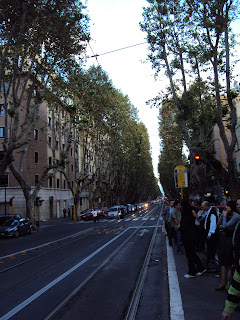 |
The tree-lined Viale Regina Margherita in
the area of Rome where Loren was born |
Travel tip:
Viale Regina Margherita, the area in which Loren was born in the
charity ward of a hospital, is a long boulevard in the Rome suburbs to the
northeast of the city centre, linking the neighborhoods of Trieste, Salario and
Nomentano. It ends at Piazza Sassari, near the Polyclinic Umberto I and Sapienza
University. The boulevard has many pretty
buildings and villas built in the period between 1910 and 1917, designed mainly
by Pio Piacentini and his son, Marcello.
Travel tip:
Once one of the busiest ports on the Mediterranean, much
bigger in its heyday than neighbouring Naples, Pozzuoli is less important now
but remains a centre for commercial shipping, fishing and tourism
with a population of around 80,000 people.
The relics of an enormous Roman amphitheatre attract many visitors – it
was supposedly the arena in which the patron saint of Naples, San Gennaro,
survived being thrown to the lions – as does nearby Solfatara, the shallow
crater of a dormant volcano characterised by numerous fumaroles and bubbling mud
pools.



